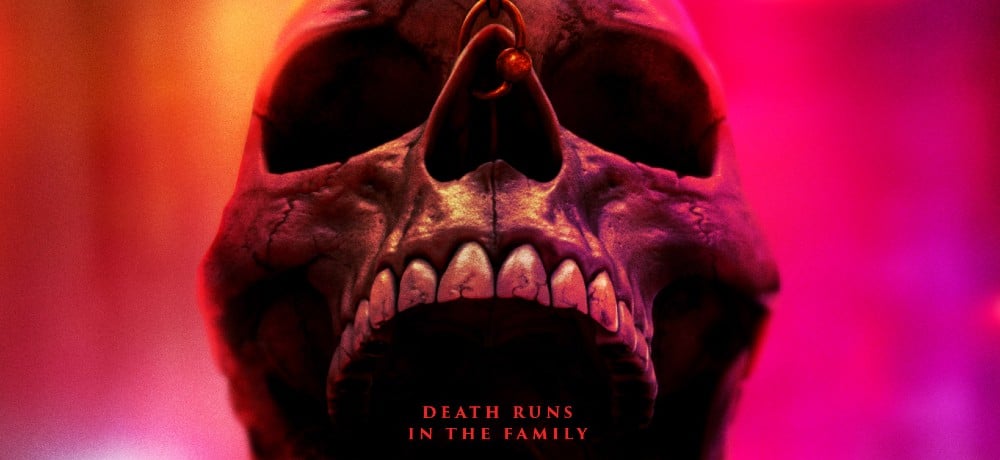


Aren’t horror franchises supposed to get worse with each entry? Nah. We’re in a golden window for later-stage prequels and sequels. Indies like V/H/S/Beyond (7th entry) to backtracks like The First Omen (6th entry, remake included) are healing the stigma of a Jason Goes to Hell or Texas Chainsaw 3D. Here to offer its axe as the latest example for an inspiring trend is Final Destination Bloodlines, bringing Final Destination back to prominence with a bloody entertaining sequel fourteen years later.
Freaks (and Kim Possible) directors Zach Lipovsky and Adam Stein take a risk on their lore-spanning continuation of Death’s favorite franchise. The Final Destination movies have relied on the cyclical motions of inescapable fates as illustrated by gruesome, Rube Goldbergian death sequences. Bloodlines’ screenplay, written by Guy Busick and Lori Evans Taylor, is still that, but in a way that addresses every film. A tome is introduced, scribbled full with data from every previous entry, as relatives try to work backward from Death’s blueprint and save as many lives as possible. Worries of “overcomplication” flooded my mind upon the concept’s first introduction, yet they were flushed out, scene by scene, by never dulling the gleeful enjoyment of a Final Destination killing spree.
Kaitlyn Santa Juana stars as Stefani Lewis, haunted by nightmares that turn out to be her grandmother Iris’ (Gabrielle Rose) life-saving premonition. Unfortunately, we know what prevents mass casualties in the Final Destination universe. Iris was supposed to die in 1968 when visiting a rotating restaurant that resembles Seattle’s Space Needle, along with all the other patrons, tableside chefs, and bratty children throwing pennies off the observation deck. Decades later, Stefani confronts her reclusive grandmother (à la David Gordon Green’s Laurie Strode), who’s somehow avoided Death’s touch—but the reaper’s back. It’s up to Stefani to decode Death’s patterns, or her entire connected family will be brutally slain one by one.
The “Bloodline” formula is a devious wrinkle, a more intimate ensemble that mourns and grieves deeper than co-workers or high school friends. It’s not fantastically heartfelt; the ensemble is still largely just goregasm fodder, but Death’s plan feels more sinister. Iris never should have lived, nor should her family tree—they’re all on the chopping block. Santa Juana produces a few laughs playing conspiracy theorist while cousins mock and aunts reject Death’s pettiness, but it’s a typical Final Destination final girl role. Richard Harmon as the tattooed “no effs given” snarker and Owen Joyner as the athletic yet sweetly concerned dudebro stand out as Stefi’s cousins, while the rest are boilerplate additions. Anna Lore as another undefined cousin, Teo Briones as the little brother everyone adores, all down the line.
Of course, this is Final Destination. You’re here for the mass casualty opening, the owed gravestones that follow, and … well, that.
Iris’ premonition is one of the franchise’s best to date. The Skyview has all the texture and bustle of Drop’s built-for-screen restaurant with an even more breathtaking view. That means it’s even more horrific when the glass dance floor shatters like crème brûlée crust during “Shout,” which is the first traumatizing domino. Fiery burner explosions, overstuffed elevators, and crumbling architectural damage cue kill after kill with blood-drenched emphasis. Young Iris (Brec Bassinger) scampers for her life as obstacles send her darting for another escape, which is obscenely fun, but also exceptionally nasty. Lipovsky and Stein have a cheeky laugh as an A+ needle drop can be heard over a valet’s radio before diners start splatting, the brand of dark comedy I crave. Between the skin-ripping, third-degree burns, and literal cartoon piano gags, there’s so much malevolence to savor—and that’s just in the first few minutes.
Kill scenes are moderately less involved than some of the franchise’s best chain reactions, but no less cruel or detailed. Because Stefani’s trying to prevent deaths from happening, hovering over relatives like a helicopter guardian, there’s an added “gotcha” when Lipovsky and Stein throw a curveball. Everyone will be talking about an MRI machine’s magnetic pull that eviscerates someone—the piercings gag, chef’s kiss—as well as a garbage truck smush that pops with SFX wizardry. You’ll spot a blend of visual and practical designs as bodies are pulpified, skewered, and destroyed, but it’s no sweat for Lipovsky and Stein’s extensive VFX background. The duo earned the directing gig by sneaking a premade video at the end of their Zoom audition, where they both die—digitally—and that’s the enthusiasm surging through Bloodlines’ spectacular slaughter sequences.
There are pitfalls, like some melodramatic family values vibes that land flat. Massacre madness comes first, daytime television drama second. Then again, what Bloodlines nails, it crushes—like Tony Todd’s farewell as William Bludworth. His outro is sublime, and even improvised for a portion because the creators wanted Tony to say his goodbye from the heart. Lipovsky and Stein adore this ultra-violent franchise with all their hearts, and that respect shines through in their uplifting of Todd—a bittersweet, yet warmly appropriate finale to a tremendous, genre-defining career.
Final Destination Bloodlines is the longest Final Destination by far, but never feels like it. Producers have found stalwart champions in Lipovsky and Stein, who could steer Death’s ship for the foreseeable future (should future entries be greenlit). What you’re lining up for, the bloodlust we crave, is what horror fans want to see on their theater screens. It’s a sequel that never tries to cheat Final Destination fans, remaining in tune not only with the hits we want played, but forging new ideas to play with in Death’s sandbox.
Movie Score: 3.5/5